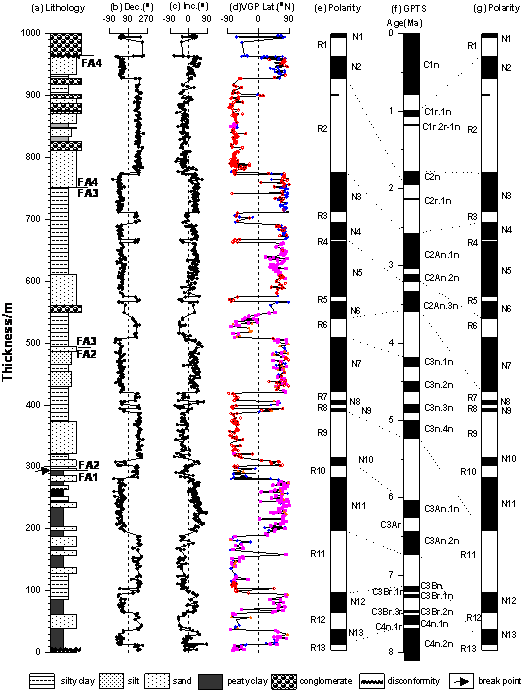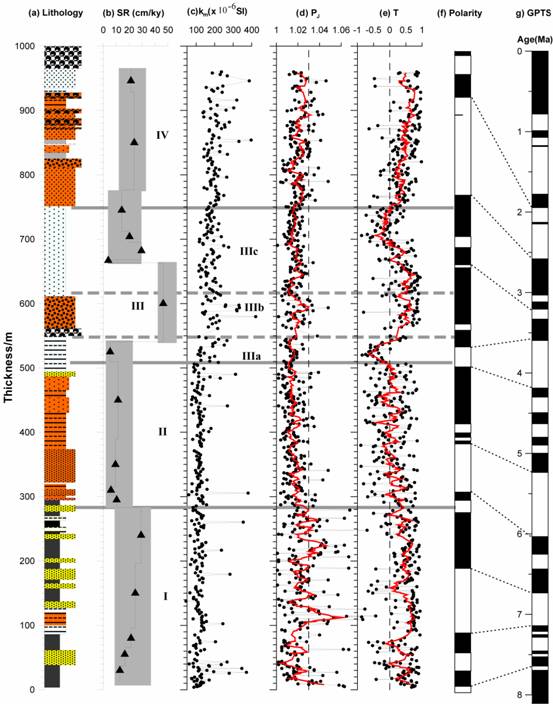Postdoc Shihu Li and his supervisors Rixiang Zhu and Chenglong Deng present a high-resolution magnetostratigraphy, rock magnetic and anisotropy of magnetic fabric study of the Dali Basin with the objective of constraining the timing of strike-slip faults and rotation pattern of the southeast margin of the Tibetan Plateau in the late Cenozoic.
The magnetostratigraphic results revealed that the sedimentary profile spans from ~7.6Ma to 1.8 Ma, which indicates that the unroofing of Diancang Shan and activation of the Dali fault system were initiated at ~7.6 Ma. They also indicate that normal dip-slip was increased significantly after ~2.5 Ma. The overall mean paleomagnetic direction suggests that the Dali Basin experienced insignificant rotation with respect to the Eurasian plate. This indicates that most of the clockwise rotation in southeast margin of the Tibetan Plateau, as demonstrated by previous pre-Cenozoic paleomagnetic studies, occurred prior to the late Miocene and may be concentrated between the Eocene and middle Miocene, contemporaneous with the sinistral slip of the Ailao Shan-Red River Shear Zone. Rock magnetism and anisotropy of magnetic fabric indicate that the provenance of the sediments in the Dali Basin may have changed at 4.2 Ma. The results indicate that the Dali Basin experienced four stages of infilling, which is consistent with the variation of sedimentary accumulation rates and lithology.

Figure 1 Magnetostratigraphic results from the Dali Basin

Figure 2 The infilling processes reflected by the variation of lithology, sedimentary accumulation rate, magnetic susceptibility and anisotropy of magnetic fabric
Li et al., 2013, Magnetostratigraphy of the Dali Basin in Yunnan and implications for late Neogene rotation of the southeast margin of the Tibetan Plateau: Journal of Geophysical Research, v. 118, p. 791-807, doi:10.1002/jgrb.50129 (http://dx.doi.org/10.1002/jgrb.50129)
Li et al., 2014, Tectonic and sedimentary evolution of the late Miocene–Pleistocene Dali Basin in the southeast margin of the Tibetan Plateau: Evidences from anisotropy of magnetic susceptibility and rock magnetic data: Tectonophysics, v. 629, p. 362-377, doi:10.1016/j.tecto.2014.05.035 (http://dx.doi.org/10.1016/j.tecto.2014.05.035).